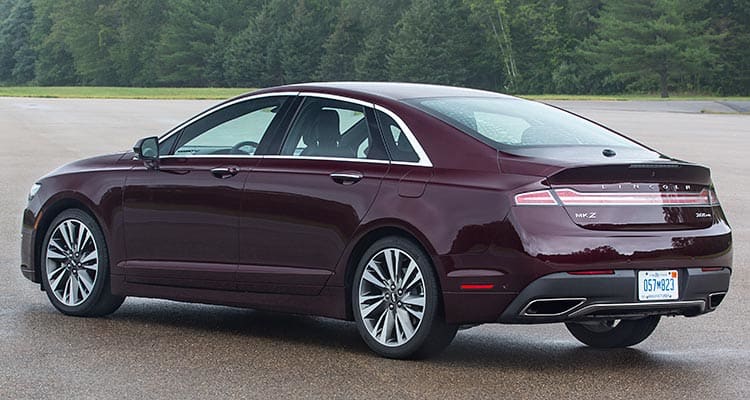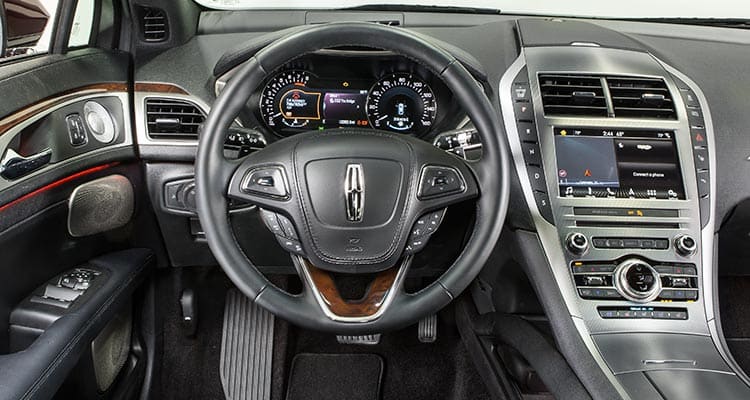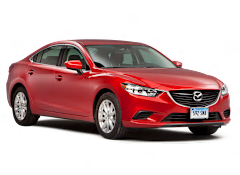We were quite impressed with the Lincoln MKZ when we tested it in 2013. Not only did it look great, but the then-redesigned Lincoln also drove like a well-honed sports sedan, with agile handling and a controlled ride that produced a very satisfying driving experience. We were less gung-ho on the controls and a few other details, however.
Inevitably, the MKZ underwent the mid-cycle freshening that every car undergoes in between major redesigns. Some freshenings result in a minor nip and tuck, while some are more extensive. The MKZ's 2017 update is of the latter, encompassing engine, suspension, and interior changes as well as the addition of a prominent new snout. But has parent company Ford strayed from the recipe that made the last MKZ one of our favorites? To find out, we rented a 2017 Lincoln MKZ from Ford and got a thorough feel for the changes.

Responding to customer feedback, Lincoln softened the suspension somewhat, dialing back on the car's handling prowess and skewing its repertoire toward a plusher ride. Indeed, the MKZ rides very comfortably, absorbing the rough stuff in stride. It covers ground in a relaxed, yet controlled, manner.
Whereas the crisp handling of the 2013-16 Lincoln MKZ meant the sedan had no problem eating up corners for breakfast, the freshened one is no such athlete. It's still responsive, secure, and predictable but has lost that extra edge that made it a delight for driving enthusiasts. (For the record, the car we drove was an all-wheel-drive model fitted with 19-inch wheels. Ford says that front-drive versions riding on 18s should be more responsive. We'll soon verify that claim.)
On the engine front, the most popular 2.0-liter turbocharged four cylinder has been updated and now makes 245 horsepower (up from 231). It has reduced turbo lag, gained more decisive throttle response at low engine speeds, and is quieter. The MKZ's sister car, the Ford Fusion, also gets this engine for 2017. We got 23 mpg overall back in 2013 and estimate that won't change much. In addition, the MKZ hybrid's powertrain, which returned an impressive 34 mpg overall in our 2013 test, remains the same.

Thankfully, Lincoln addressed our biggest complaint with the MKZ: the unintuitive MyLincoln Touch infotainment system and its surrounding touch-sensitive controls. The 2017 Lincoln MKZ employs the much better Sync 3 system, which includes conventional knobs for volume and tuning, and rocker switches for temperature. The pushbutton gear selector remains; it's a far reach and requires a careful look to hit the right button.
The Dearborn team also carved out more room in the footwell by modifying the left foot rest, which helps driving position some. Ford also made the cabin more luxurious with the addition of premium materials. On top of that, Ford replaced the impossible-to-find trunk release, which used to reside under the rear bumper, with another impossible-to-find tiny button on the rear deck. At the least, it's slightly more convenient and you don't get your hands dirty.
The MKZ starts at $35,010 for a 2.0-liter front-wheel-drive model; the hybrid is priced the same. Higher trims can easily reach well into the $50,000 range. All-wheel drive is an option but not on the hybrid. The uplevel engine is a new 400-hp 3.0-liter V6 turbo, replacing the old 3.7-liter V6. Understandably, due to its prodigious power, this engine is coupled exclusively to AWD. A 350-hp version of that engine is available in front-wheel drive.
Getting a blind-spot monitoring system requires a $1,255 option package; A full suite of advance safety features, including adaptive cruise control with stop-and-go ability, is part of the $2,395 Technology package.
Ultimately, the freshened MKZ carves out more daylight between it and its sister car, the Ford Fusion. If you crave luxury over spirited driving, you just might find these changes appealing.
Editor's Note: The story was updated to clarify that a 350-hp, 3.0-liter is available with front-wheel drive.





















